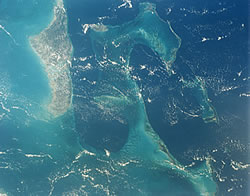Flood data, new predictions
The recent flooding in Europe (2002) has been designated as the worst in centuries. However, newer information obtained through a more precise and effective means, now suggests that even these widespread catastrophic events may have been smaller than earlier experienced floods. Standard statistical data based on gauge records for flood prediction have been of questionable value. Inaccuracies as well as inherent limitations of such statistical practices have in the past impeded accurate prediction of the size and scope of flood events, risking further loss of lives and property. SPHERE GIS, contributes to just such an improvement. Designed to provide both spatial and vector data models, the technology provides in depth coverage of rivers, watersheds, topographies, elevation models and political entities such as municipality boundaries. The system is based on archived data from both official and ecclesiastical sources (historic) as well as paleo-flood records obtained from geological and geomorphologic techniques. Moreover, it is further enhanced by its vector and spatial data mining techniques that provide unprecedented information for hydrological and geographical models. This includes information on drainage basins, sub-basins, rivers, reservoirs and gauging stations as well as administrative limits, topography, railways, roads, urban centres and parks. SPHERE-GIS comes with customisable tools that extend its functionality, some of which include a map-data display, statistical functions and a user-friendly interface developed in visual basic. This allows the user to select menus and tools through which to manipulate graphical and alphanumeric information. As such, the programme establishes itself as a highly effective tool for the prediction and modeling of flood data, being capable of risk assessment to such super structures as dams, power plants and other infrastructures. Since it is based on archived information of floods, can provide statistical analysis and assess geological topography, it establishes itself as a versatile tool for flood management.







